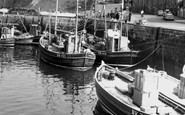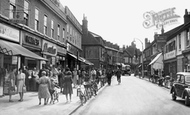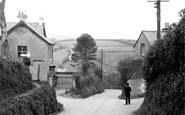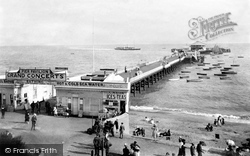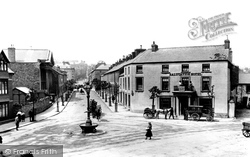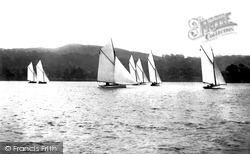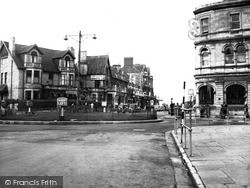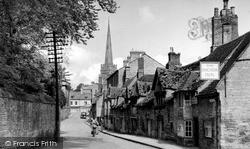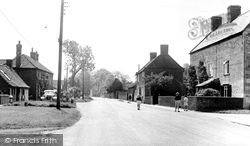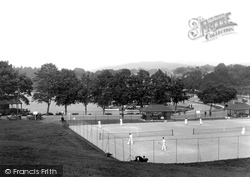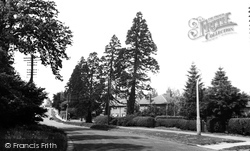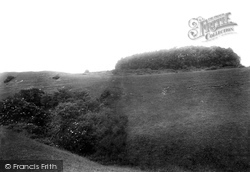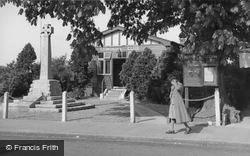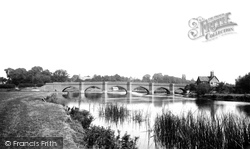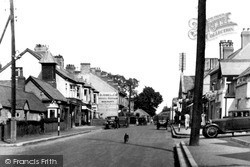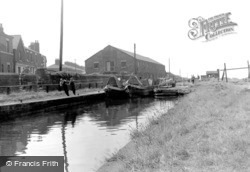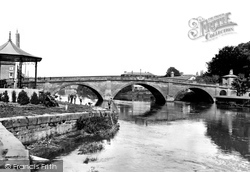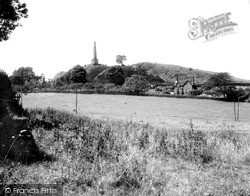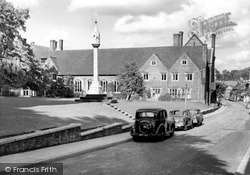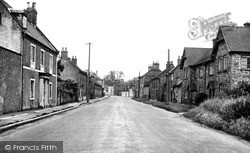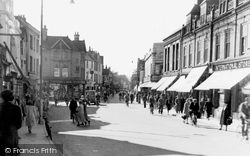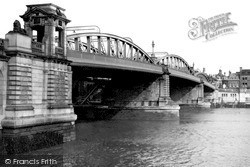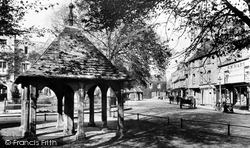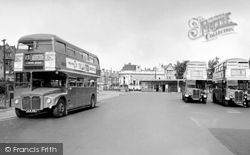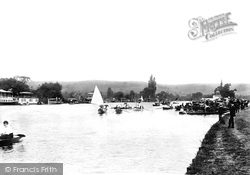Places
18 places found.
Those places high-lighted have photos. All locations may have maps, books and memories.
- Hythe, Kent
- Hythe, Hampshire
- Small Hythe, Kent
- Bablock Hythe, Oxfordshire
- Methwold Hythe, Norfolk
- Hythe, Somerset
- Hythe, Surrey
- Hythe End, Berkshire
- The Hythe, Essex
- Egham Hythe, Surrey
- West Hythe, Kent
- New Hythe, Kent
- Broad Street, Kent (near Hythe)
- Horn Street, Kent (near Hythe)
- Newbarn, Kent (near Hythe)
- Newington, Kent (near Hythe)
- Broad Street, Kent (near Hythe)
- Stone Hill, Kent (near Hythe)
Photos
360 photos found. Showing results 3,161 to 360.
Maps
101 maps found.
Books
10 books found. Showing results 3,793 to 10.
Memories
4,406 memories found. Showing results 1,581 to 1,590.
Figheldean Manor
In 1945, just before VJ day, I moved from Scotland with my mother, to Figheldean Manor, to join my father who was then based at RAF Netheravon. I had never seen houses with flint walls and thatched roofs before, moreover, I had ...Read more
A memory of Figheldean by
Deal Railway Station
I moved to Deal when I was 3. We lived in a house owned by the railway in the station approach. My father was linesman on the railway. I went to the parochial school on London Road. The Headmaster was Mr Scholl and my teacher, Mr ...Read more
A memory of Deal in 1947 by
Many A Beer Here
Many a beer here I have downed, served by the landlady who was then locally known as Brandy Lil, I can't imagine why though?
A memory of Chilham in 1973 by
1976 In Llanbradach
I visited my gran and my aunts in Llanbradach twice in the early 1970s. It was my first ever visit to Great Britain and I fell in love with the church. To someone accustomed to supermarkets, shopping from grocer to butcher ...Read more
A memory of Llanbradach by
A Holiday In South Street, Seahouses March 2004
A friend let me stay in her wee fisherman's cottage in Seahouses for an early holiday in March 2004. My wife Elizabeth and I drove up from our home in Watford through the unseasonal snow and we were ...Read more
A memory of Seahouses in 2004 by
From 1944
Memories from that long ago tend to stick in the back of the mind until an association brings them out. Being a small child, the village green at Bearsted seemed gigantic and the village pond was just a pond. We used to paddle in the ...Read more
A memory of Bearsted by
Castle Square Bus Terminus
Castle Square of the 1950s and 60s had a vibrancy that is absent nowadays. This was because all of the local bus services terminated there and a constant stream of people dismounted to go about their business ...Read more
A memory of Caernarfon in 1959 by
Freddie Holmes Garage
I attended the primary school, just down the Maldon Road from the garage in the photo, which was run by Mr Holmes. The sweet-shop behind the pumps was popular with us kids! Headmaster of the primary school was Mr ...Read more
A memory of Great Totham in 1960 by
A Hazy Glimpse Of Times Gone Past
Where the houses come out, by the bus was a shoe shop owned by two sisters, a really old fashioned one that looked like time stood still when you went in, coming back the other way, if you walked along, was the ...Read more
A memory of Wokingham in 1955 by
The Nulty Family At Kittitoe Near Parracombe
I think I was 12 years old and living in Hatch End, Middlesex, when I first noticed a lovely girl of about my own age called Alison Nulty. She moved to Parracombe as her family wanted to start a ...Read more
A memory of Parracombe in 1957 by
Captions
4,899 captions found. Showing results 3,793 to 3,816.
Other distractions were provided by the Pavilion and the camera obscura. Alternatively, one could hop on one of the fleet of Belle Steamers that plied daily to a number of other coastal destinations.
Note the hotel carriage by the entrance, the various horse-drawn conveyances and also the people on the hotel balcony. The building with the colonnaded frontage was the Masonic Hall.
The boats were built to a high (and expensive) specification, the original 22ft-class later being supplemented by the more affordable and manageable 17ft-class.
Originally a mere sub-branch of Cardiff's Bute Street, the growing stature of the town is evidenced by the bank's gaining of both 'full' status (c1886) and Bute Street's erstwhile manager, Mr H W Rice!
The rest have been replaced by the modern back wall of a stone clad Co-op supermarket. The cottages are clearly in a dilapidated condition in this 1950 view, but their loss is surely to be regretted.
They would not notice the milk churns on the stand by the side of the road (left), as they were a common sight then.
Until the development of the Promenade for tourism purposes early in the 20th century, the area of the tennis courts was occupied by the Bowness Council's sewage settlement tanks.
It is a member of the same family that is commemorated by the Burton Memorial.
The latter was originally named Brunswick Row by the Duke of Gloucester on 16 August 1824.
Now a tree-clad hilltop fort, this is another example of the many forts built by the Iron Age people. To date it has never been excavated.
It was replaced by the Hailsham Club nearer the church in order to make way for the Vicarage Fields shopping precinct, which was started in 1965 and opened in 1968.
Scott also rebuilt the river bridge in 1864, a fine red brick one in a medieval style, seen here from the south by the Thames. We can just see the church spirelet.
A fine car approaches the High Street by the Parliament Building (right), and a dog feels safe enough to trot down the middle of the road.
It was financed by the Duke of Bridgewater and built by James Brindley.
By the end of the 19th century, New Street was both the principal business street in the town and the best for shopping and entertainment.This view is from Paradise Street.
Here we can have a closer look at the famous bridge, with a group of boys fishing by the bandstand (left).
The monument on the hill was erected by the local people in 1836 in memory of their landlord, George Granville Leveson- Gower, Duke of Sutherland.
Parked by the side of Kings Road and opposite the memorial are a gleaming black Rover 14, a Riley 1.5 and an early F-type Vauxhall Victor.
Named after the original landowner, Justin de Cave, South Cave is a village of two halves, separated by the castle, built in 1787.
Moulsham Street has now been cut in two by the building of Parkway. It is a continuation of the High Street, which we see in C73044.
That bridge was joined in the 1960s by the dual carriageway box-girder road bridge and footway alongside.
Until 1880 this area was the butchers' shambles, then replaced by the pump (in the shelter, foreground).
This fine theatre has been used by the BBC as a recording studio since the late 1960s; it is one of comparatively few remaining suburban music halls in Greater London outside the West End.
It and the island are now owned by the Henley Royal Regatta, and the temple has recently been well restored.
Places (18)
Photos (360)
Memories (4406)
Books (10)
Maps (101)


